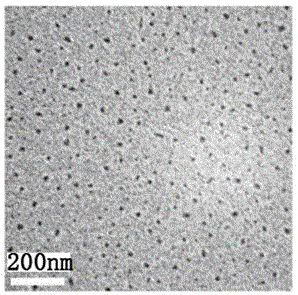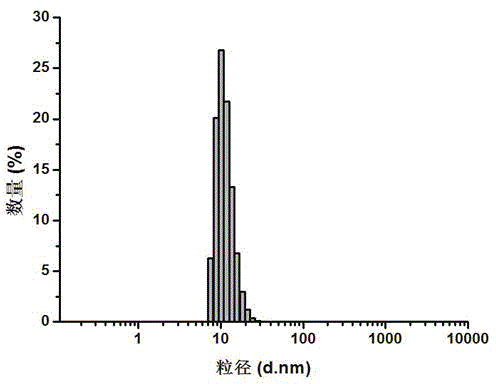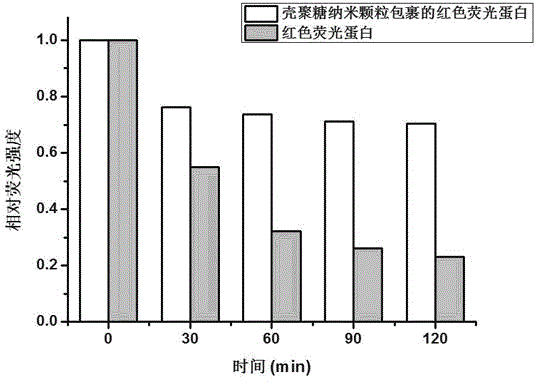Method for preparing nano fluorescent probe with high bio-safety
A nano-fluorescent probe, biosafety technology, applied in the field of preparation of nano-fluorescent probes, can solve the problems of long-term storage, application limitations, large nanoparticles, etc., achieve good thermal stability and pH stability, and expand utilization The effect of good range and area, dispersion stability
- Summary
- Abstract
- Description
- Claims
- Application Information
AI Technical Summary
Problems solved by technology
Method used
Image
Examples
Embodiment 1
[0027] a. Protonation treatment of chitosan: Dissolve chitosan completely in 1mol / L hydrochloric acid solution, add absolute ethanol solution 5 times the volume of hydrochloric acid, dry and grind the precipitate to obtain the solid of protonated chitosan powder.
[0028] b. Preparation of protein-coated chitosan nanoparticles: Add 1mg of red fluorescent protein (RFP, mcherry, excitation wavelength 587nm, emission wavelength 610nm) to 2mL phosphate buffer solution with a pH value of 8.0 and a concentration of 20mM (i.e. In PBS), add 12 mg of the above-mentioned protonated chitosan, stir at room temperature for 30 min, add 100 microliters of 2.5% (volume fraction) glutaraldehyde aqueous solution, and stir at room temperature for 12 hours. After the reaction is complete, wash with ultrafiltration three times (3000 g, 15 min ) to remove unreacted chitosan, etc., to obtain protein-coated chitosan nanoparticles.
[0029] attached figure 1 attached figure 2 It shows that the si...
Embodiment 2
[0032] The red fluorescent protein in Example 1 can be replaced with near-infrared fluorescent protein (eqFP650), and other operating methods can be referred to in Example 1, and chitosan nanomaterials wrapped with near-infrared fluorescent protein can still be obtained for imaging at the molecular level. At the same time, the penetration of infrared light intensity can also be used, so that it has the potential to be used for imaging of small animals in vivo.
Embodiment 3
[0034] The red fluorescent protein in Example 1 can be replaced with Green Fluorescent Protein (EGFP). Other operating methods refer to Example 1, and chitosan nanomaterials wrapped with Green Fluorescent Protein can still be obtained, using the excellent optical properties of EGFP (such as: high quantum yield), and can be well applied to imaging at the molecular level.
PUM
 Login to View More
Login to View More Abstract
Description
Claims
Application Information
 Login to View More
Login to View More - R&D
- Intellectual Property
- Life Sciences
- Materials
- Tech Scout
- Unparalleled Data Quality
- Higher Quality Content
- 60% Fewer Hallucinations
Browse by: Latest US Patents, China's latest patents, Technical Efficacy Thesaurus, Application Domain, Technology Topic, Popular Technical Reports.
© 2025 PatSnap. All rights reserved.Legal|Privacy policy|Modern Slavery Act Transparency Statement|Sitemap|About US| Contact US: help@patsnap.com



